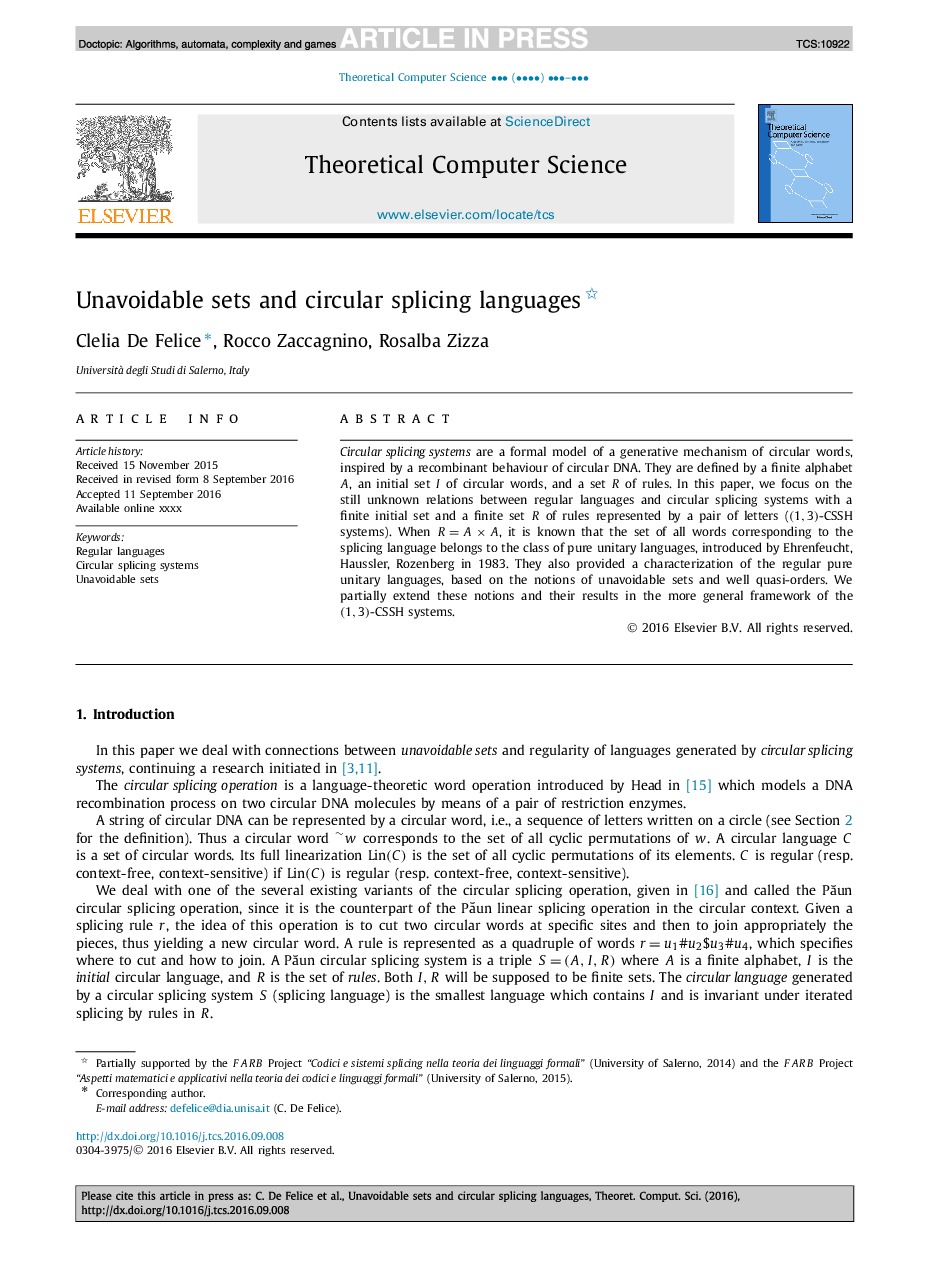| Article ID | Journal | Published Year | Pages | File Type |
|---|---|---|---|---|
| 4952296 | Theoretical Computer Science | 2017 | 11 Pages |
Abstract
Circular splicing systems are a formal model of a generative mechanism of circular words, inspired by a recombinant behaviour of circular DNA. They are defined by a finite alphabet A, an initial set I of circular words, and a set R of rules. In this paper, we focus on the still unknown relations between regular languages and circular splicing systems with a finite initial set and a finite set R of rules represented by a pair of letters ((1,3)-CSSH systems). When R=AÃA, it is known that the set of all words corresponding to the splicing language belongs to the class of pure unitary languages, introduced by Ehrenfeucht, Haussler, Rozenberg in 1983. They also provided a characterization of the regular pure unitary languages, based on the notions of unavoidable sets and well quasi-orders. We partially extend these notions and their results in the more general framework of the (1,3)-CSSH systems.
Keywords
Related Topics
Physical Sciences and Engineering
Computer Science
Computational Theory and Mathematics
Authors
Clelia De Felice, Rocco Zaccagnino, Rosalba Zizza,
